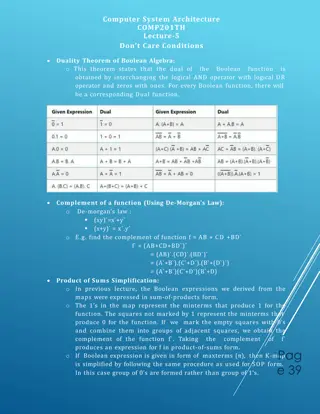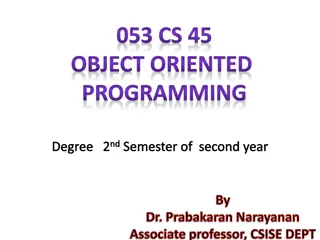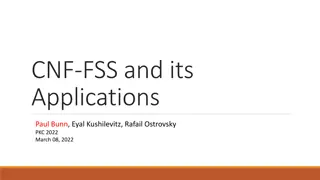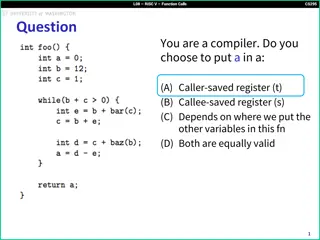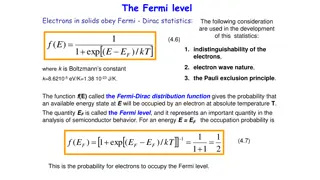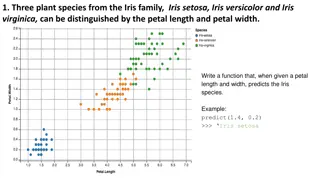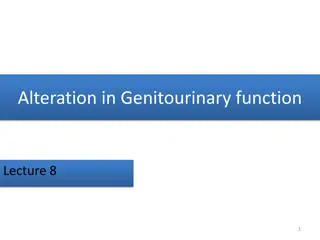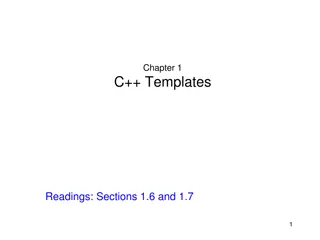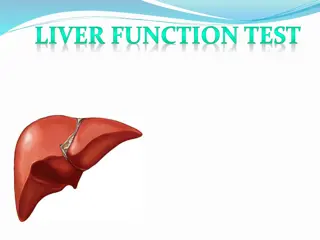Understanding RepeatMasker: Design, Function, and Applications
Explore the architecture and usage of RepeatMasker for identifying and analyzing repetitive sequences in genomic data. Discover the sources of repeat sequence data, how RepeatMasker employs motifs for representation, and the utility of consensus and HMM models.
Download Presentation

Please find below an Image/Link to download the presentation.
The content on the website is provided AS IS for your information and personal use only. It may not be sold, licensed, or shared on other websites without obtaining consent from the author. Download presentation by click this link. If you encounter any issues during the download, it is possible that the publisher has removed the file from their server.
E N D
Presentation Transcript
Design and Use of RepeatMasker Jeremy Buhler jbuhler@wustl.edu
Parts of RepeatMasker Programs Smit AFA, Hubley R, and Green P. RepeatMasker-Open 4.0. 2013-2015. http://www.repeatmasker.org/ RMBlast (NCBI variant), HMMER for comparisons Data Dfam https://www.dfam.org
Overview Sources of repetitive sequence data How RepeatMasker finds repeats Issues and limitations
Data Source Uses a library of known repeat seqs Supplied by Dfam ( DNA families DB ) Repeat families in Dfam are carefully curated using multiple alignment tools.
Example of a repeat family summary page from Dfam
Repeats are DNA Motifs Repeats occur in multiple instances, so use motif technology to represent them accgataggtatacgtatca-tttacgatac atcgct-ggtttacgcgtcaattcaggatgc accggt-tgtttacgtagcaatctaggatac accgat-ggtttacgtatcaatttaggatac
Two kinds of model: consensus and HMM (= weight matrix + gaps)
Why Use Motifs for Repeats? Faster to compare one sequence/model to genome than many seqs Even simple motifs, like a consensus sequence, are better than individual instances for discovering new copies of a repeat.
Utility of Motif vs Instances actggt acacgt atagct 3 3 4 tcaggc
Utility of Motif vs Instances actggt acacgt atagct acaggt 2 tcaggc
Types of Repeats Identified Interspersed (Alu, LINE, MIR, ) Micro- and mini-satellites Noncoding RNAs (tRNA, rRNA, snoRNA, ) Short tandem + low complexity (agagagag, actactactact, aaaaataataaaa, ) Common artifacts (E. coli, vectors)
Overview Sources of repetitive sequence data How RepeatMasker finds repeats Issues and limitations
The Basics Uses RMBlast (BLAST-like tool) to compare query to consensus model library Uses HMMER (vaguely BLAST-like, but with much fancier math) to compare query to HMM library
Partial Repeats RepeatMasker will cheerfully report an incomplete match to a repeat. Detects best-conserved parts Some repeats (retroposons) typically incomplete
Nested Repeats RepeatMasker tries to detect nesting time
Nested Repeats RepeatMasker tries to detect nesting time
Nested Repeats RepeatMasker tries to detect nesting time
Nested Repeats RepeatMasker tries to detect nesting time (Please don t ask me how)
Nested Repeats RepeatMasker tries to detect nesting time (Please don t ask me how) See the RepeatMasker presentation by Dr. Jessica Storer for details
Overview Sources of repetitive sequence data How RepeatMasker finds repeats Issues and limitations
Library Choice Make sure to use correct libraries for your target species (Commonly used organisms have preselected library lists) Danger: mis-identifications!
Incomplete Masking Highly diverged repeats can be tough to find Might leave ends of a repeat unmasked (masked) BLAST hit Is this really a new feature?
Use the Right Tool Tandem repeats and duplications Dust (short) Morgulis et al., 2006 TRF (long) Benson et al., 1999 RNA tRNAscan-SE, Infernal, Other repeats Search for matches to Dfam (HMMER) and the NCBI nt database (BLAST) Check the Repeat tools page on TE Hub
In conclusion Hey, let s be careful out there! Neal Wellons; https://flic.kr/p/FrUFPX



